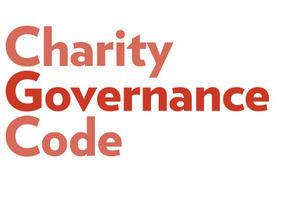Standards of charity governance have been firmly in the spotlight in recent years, with the focus on trustees sharpened by the Charity Governance Code. And recent suggestions that the current model is no longer fit for purpose, certainly for larger organisations, has led to debate around whether the classic traditional structure for charities is broken. And if so, how can it be fixed?
Recalling her 30 years of experience in the charity sector, Anne-Marie Piper, senior partner at Farrer & Co, says that when she started out, “governance wasn’t a thing”. She clarifies: “Of course governance was practiced but it was not a word I heard very often. The whole sector has since come of age and geared up on regulation and governance in a way that would have been inconceivable three decades ago.”
She thinks that the notion that the governance model is broken is too simplistic. “There are things that don’t work and in some cases things that could be better. For example, the idea of a ruling oligarchy (where the charity is controlled only by trustees because there are no members, or the members are the same people as the trustees) is terribly efficient, which is why it is popular. But it doesn’t always offer checks and balances against trustees taking the charity off into a direction which isn’t aligned with the intentions or wishes its founders, donors or stakeholders.”
Chris Sherwood, chief executive at RSPCA, describes himself as a “governance junkie”, as the charity is the second federated organisation he has been at the helm at, following six years at Relate. Governance has been a particularly hot topic at RSPCA, which has undergone the biggest changes to its structure and procedures since 1974, culminating in a historic AGM over the summer.
He agrees that “broken” is too strong a term. “The context in which we operate is changing considerably. We can no longer take for granted a benevolence towards charities, and that what we do is automatically good. Scrutiny is the highest it has ever been, there is a lot more potential for criticism and questions around trust, which puts governance in the spotlight. The ability for charities to change is not as speedy as in the private sector because we have to consider stakeholder views.” He also points out that “charity” is such a diverse term, with the same legal form covering a huge span of different organisations.
Rosie Chapman is a consultant in governance with a regulatory background at the Charity Commission. She is also independent chair of the Charity Governance Code steering group, and doesn’t feel that there is a crisis. “There is no need for a disruptive moment in charity governance. But there are around 168,000 registered charities, and there is a conversation to be had around the different types of charity and where they get money from, and whether that drives governance behaviour and models.”
Meanwhile Charles Mesquita is a trustee of RL Glasspool, Bowel & Cancer Research, and Prism The Gift Fund. He remembers how his first experience as a trustee many years ago was for a local village hall. “It was a cathartic experience. The first challenge was educating the management committee that they were in fact charity trustees.”
Mesquita thinks that the seismic change has been the professionalisation of the sector, particularly organisations with staff. “We have seen improved standards with CEOs, finance directors and fundraisers, and now progressively with trustees, who have been slower to the party as they are volunteers.
“The current model isn’t broken, it covers a wide range of organisations and is adaptable. But one big worry is the pressure being placed upon trustees from a host of regulators.
“The Charity Governance Code has been brilliant at creating a user-friendly framework to work with, and should definitely not be seen as a tick box exercise. The easiest way to kill the fun of being a trustee is to overload them with procedures manuals that lack any real practical use.”
Craig Beeston, policy officer at the Chartered Governance Institute (formerly ICSA), working on not-forprofits, considers what broken means. “If it’s that things can go wrong, then there’s an argument that governance is broken across many sectors.”
He feels that renewed external scrutiny puts charities in an invidious position. “If something appears on the front page of the Daily Mail charities get criticised. If they try and then prevent that happening by paying attention to governance they also get criticised for spending money that isn’t going directly to beneficiaries.
“Sometimes the level of mistrust is higher towards those seemingly spending away from cause than when things go wrong, even though doing the former could have prevented the latter. They’re damned if they do, and damned if they don’t. Not only do charities have to pay attention to that, but also to how they sell it to the public, many of whom don’t know how big, modern charities are governed.”
Piper also considers the changing media atmosphere. “It now appears to be a regulatory offence to appear on the front page of some papers. But in the case of the Garden Bridge Trust, the conclusion of the Commission’s report seems to be that it isn’t necessarily a problem if the project fails. As long as trustees can show they did things in the right way, it is less important that it didn’t turn out right.
“This has placed more pressure on trustees to be able to show that the charity’s processes and their decision-making were in line with good governance principles. This focus on attaining high standards of governance can be dispiriting for some trustees. I’ve yet to meet a trustee who joined a charity to do governance.”
Mesquita points out that this is to do with regulation. “From a regulator’s standpoint, if it wasn’t written down, it didn’t happen. The danger is that regulation kills innovation. There is a direct correlation between regulation and the propensity to take risk.”
Sherwood says that one area where charity governance does need reform is around mergers. “There are a number that fall down on a chair’s view influencing the board. But there isn’t enough consolidation in the sector. The future of income generation in large charities, the diversity of fundraising models, and how we scale them up are all important issues, and therefore so is the governance around them.”
Although decision-making in charities can sometimes seem slow due to the trustee model, the speed with which the sector reacts to wider problems is amazing, argues Mesquita. “It is easy to focus on what isn’t going right, but we should celebrate when it does. There are plenty of examples, such as the sectors’ response to Kids Company and the fundraising scandals. Change has happened quickly because people have wanted to do the right thing. Embedded into charities is the mantra ‘we have a problem, what is the solution?’ Charities should be applauded for it.”
Attracting trustees
Chapman suggests that while it may be a contentious view, she doesn’t think trust is that low in charities. “It is holding up, and it’s a shame that the Commission appears to push an unhelpful narrative.”
She adds: “I am also not convinced that it is always difficult to get trustees. There is still a kudos attached to being on the board of a big household names, and I don’t think it is necessarily an issue for small, community organisations. Perhaps it is trickier for those in the middle.”
Piper talks about trustees’ approach to risk, which is, in part, connected with the concept of potential personal liability and in turn lies at the heart of the governance model. She reminds people of the fact that the Kids Company trustees are still waiting to find out if they face general disqualification from being company directors. “Trustees are volunteers, and are often pretty risk averse, but the idea that something done in good faith and in a voluntary capacity could not only stop you being a trustee but also cost you your career may deter potential trustees, thus creating a whole new governance challenge.”
She continues: “It can be very hard for the trustees of large and complex charities to have a detailed understanding of the charity’s operations, and yet it is with them, not the charity’s senior leadership team, that the buck stops, which is why there have been calls for unitary boards. In the commercial sector, there are risks to taking on a nonexecutive post, but they are at least paid.”
She also senses that sometimes the problem is media driven. “This makes regulators feel they have to do something straight away rather than taking the time to form a more considered view.”
Sherwood thinks that despite this it is still possible for large charities to recruit quality trustees, adding: “It is some place-based charities who may find it harder. Getting a balanced board is a challenge at a local level.” And he agrees that governance has been viewed differently since Kids Company. “There is a chilling effect in how it is approached. Fundamentally it is about whether you trust the executive to give you the information required for you to undertake your governance duties.”
Diversity and technology
Mesquita says that while you may be able to find trustees, they may not be the right ones. “Can you fill the skills matrix? Also, a lot of people have never considered being trustees, and there may be a fear factor around commitment and legal responsibilities. That said, I am not keen on formal recruitment policies. You tend to end up recruiting in your own image, thereby reducing diversity.”
Sherwood says that diversity of trustees is an issue. “This isn’t only in terms of protected characteristics but breadth of experience. Charities need to encourage their staff to have the time to go off and be trustees.”
There is a real issue around the age of trustees, with boards, for good reason, often dominated by older people with more time, despite younger people constantly being encouraged to volunteer to boost their CVs.
Beeston thinks charities accept that they need to attract younger trustees, but the governance model is too staid. “People access information in different ways in the workplace and are more used to working flexibly. They may be less attracted to the traditional model of governance.”
As Chapman summarises, if you want to attract a wider range of ages then you have to look at different ways of engaging them. Is there a role for greater use of technology and ways of connecting in governance?
The RSPCA recently grappled with this question and how far you can use tech to be innovative in governance. “We had a split-site AGM, using a video link. RSPCA meets Eurovision,” states Sherwood. “This meant maximising participation from our membership. It worked well but we had to ensure it was set up properly. If the video link had broken down then the meeting would have had to have been adjourned.”
Piper says that electronic, virtual meetings have been brought into governance contexts, but people are sometimes confused about how they are used.
“A series of telephone conversations is not the same as a conference call for coming to a decision. And the danger of a dominant chair using written resolutions on major issues, which are sent via email and agreed without formal discussion, is troubling,” she says. “We need to look at the mechanics of things, so that the spirit of governance isn’t lost through technology.”
Chairs and pay
Sherwood expresses mild surprise that thus far there has been no discussion about the role of the chair. “We need agendas at meetings to be more attractive, which makes the chair critical. There is a huge burden of time on the chair. Is there scope for them to be remunerated?”
He clarifies that he doesn’t think all individual trustees should be paid. “There clearly needs to be a check and balance. But we have to recognise that the workload of some trustees is increasing, as is the pressure on role.”
For Beeston, there is a crucial problem if you pay the chair and not other trustees. “What does it do for the burden of responsibility and how this is shared by all trustees collectively?” he asks, adding: “Also, having paid members of the board raises issues of how they are held accountable effectively.”
Piper says that some boards have got into a position where a number of trustees, with the consent of the Charity Commission, are being paid while some aren’t. And she thinks that the attitude of the Commission has changed. “It is increasingly recognising that the burden and liability of certain roles on the board are incompatible with the voluntary ask.”
She adds that if there is a post-Brexit recession, then some senior, highly remunerated people who lose their jobs might attempt to make a second career of being a professional trustee. “This is great as there will be a pool of talented people, but we could lose some of the essence of the sector.”
“Professionalisation of trusteeship is not healthy,” argues Mesquita, “if it means a charity, when faced with selecting a less experienced but passionate person or a more experienced professional as trustee, may go for the latter as the safer option. But you lose the ethos of why people should want to become trustees — passion and commitment. You also have to question whether paid non-execs in companies or pension funds do a better job. The voluntary principle is fundamental to this and has stood the test of time.”
Chapman says she also is always struck by the limited evidence about whether you get better decision-making as a result of paying trustees, but concedes that perhaps “for some types of charity, which are so reliant on public and contract funding, the model of governance required may need to change.”
Sherwood considers unitary boards. As the relationship between the senior management team and the board is so important, should members of the SMT sit on the board as directors? “I am a fan of the custodian role of trustees in safeguarding the organisation for future beneficiaries. Executives may be looking more short term than trustees.
“Recognition of stakeholder engagement is an important part of the Charity Governance Code. We’re here to deliver our mission, and can’t lose sight of that. If the SMT is working effectively with the board, it shouldn’t necessarily need a vote at the board table.”
Beeston says that if you are taking people from senior management onto the board then it may have repercussions in terms of diversity in board composition and turbulence, with a potential revolving door of trustees if staff turnover is high. “But the fear of execs on the board in a unitary board is in some ways an artificial division,” he adds. “The important thing is not whether if they are paid or not is what should determine a place on the board, but about what they bring to the governance of an organisation.”
With thanks to Farrer & Co for its support with this feature.
|
Related articles











